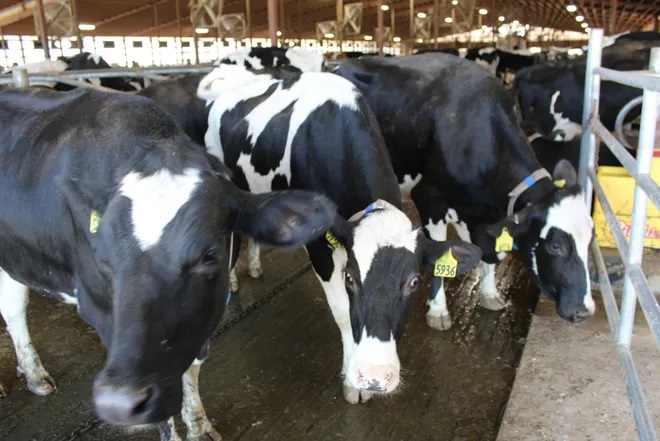
The Louisiana Department of Agriculture and Forestry encourages milk safety measures for drinking and the transportation of animals during the emerging outbreak of cattle disease.
The Highly Pathogenic Avian Influenza (HPAI) virus has been detected in herds, according to an LDAF news release. LDAF encourages dairy producers to increase biosecurity measures at their operations in response to several reports of the cattle disease across the nation, the release said..
The Food and Drug Administration defines Highly Pathogenic Avian Influenza as a disease of poultry that is highly contagious and often deadly. It is also known as bird or avian flu. HPAI viruses can be transmitted by wild birds to domestic poultry and other bird and animal species. The virus was detected in unpasteurized, clinical samples of milk, and swabs and tissue samples collected for diagnosis of sick cattle on dairy farms, the FDA reported.
To date, HPAI has been detected in dairy cattle in Texas, New Mexico, Kansas, Michigan, Idaho and Ohio.
At this time, there have been no reported detections of HPAI in Louisiana dairy cattle or other livestock. In an effort to protect the dairy herds and poultry flocks in Louisiana, a Certificate of Veterinary Inspection is being used to ship dairy cattle from any state that has, or has had, a detection of HPAI virus in dairy cattle in the past 30 days.
“Hopefully Louisiana will not see a confirmed case of HPAI, but we will continue to closely monitor the situation,” said LDAF Commissioner Mike Strain, D.V.M. “In order to protect the health of Louisiana livestock and minimize the impact HPAI could potentially have on our dairy and poultry producers, we all need to be diligent in practicing enhanced biosecurity. This is the easiest to implement and most effective measure to take against the potential spread of HPAI into Louisiana.”
The certification will only be valid for no more than seven days. All dairy cattle from a state that has, or has had, a detection of HPAI in dairy cattle in the past 30 days shall be accompanied by a CVI, the release said.
Farms should continue to monitor their dairy cows for signs of illness to ensure that milk from sick cows does not enter into interstate commerce. Individuals from Louisiana interested in transporting animals and animal products to other states and countries should contact the destination state or country to learn about import requirements before transporting animals. In addition to adhering to strict biosecurity practices in operations, LDAF recommends quarantining new animals for 30 days before introducing them into a herd.
If dairy producers notice symptoms ‒ acute sudden drop in milk production, changes in milk color/consistency, decreased feed intake, and other clinical signs ‒ they should contact their herd veterinarian and the Louisiana Department of Agriculture and Forestry immediately.
Although consumption of raw milk is discouraged, the USDA states currently there are no concerns about the safety or availability of pasteurized milk products nationwide because pasteurization has continually proven to inactivate bacteria and viruses, like influenza viruses, in milk and is required for any milk entering interstate commerce.
Producers that identify illness in their cows should work with the State Animal Health Official’s office for diagnostic testing. For questions regarding milk safety during the outbreak visit the USDA website.
You can now read the most important #news on #eDairyNews #Whatsapp channels!!!
🇺🇸 eDairy News INGLÊS: https://whatsapp.com/channel/0029VaKsjzGDTkJyIN6hcP1K
























